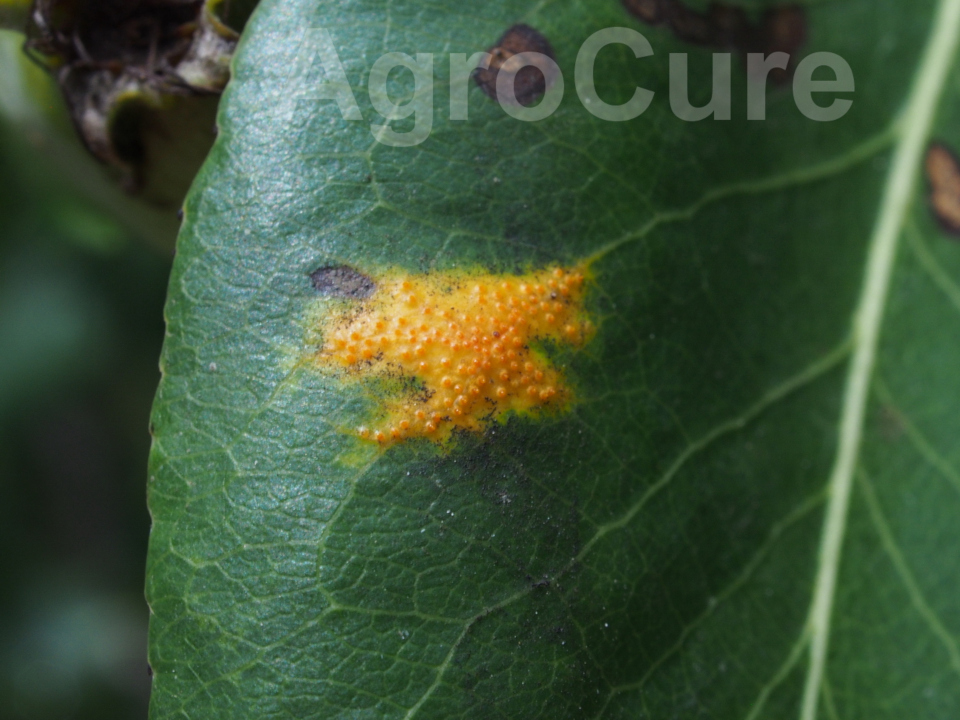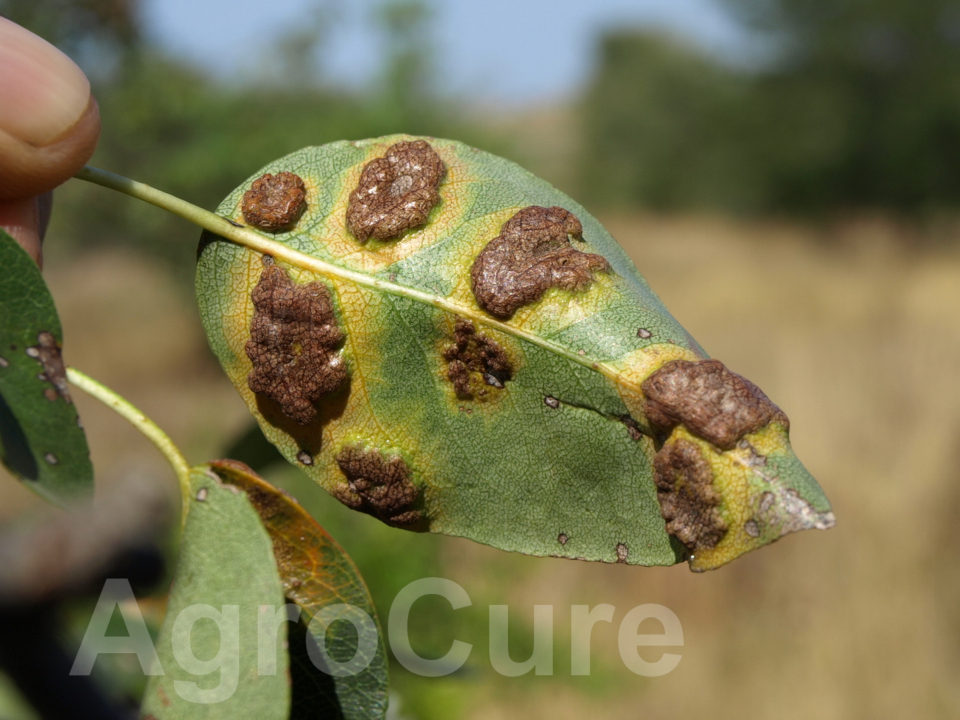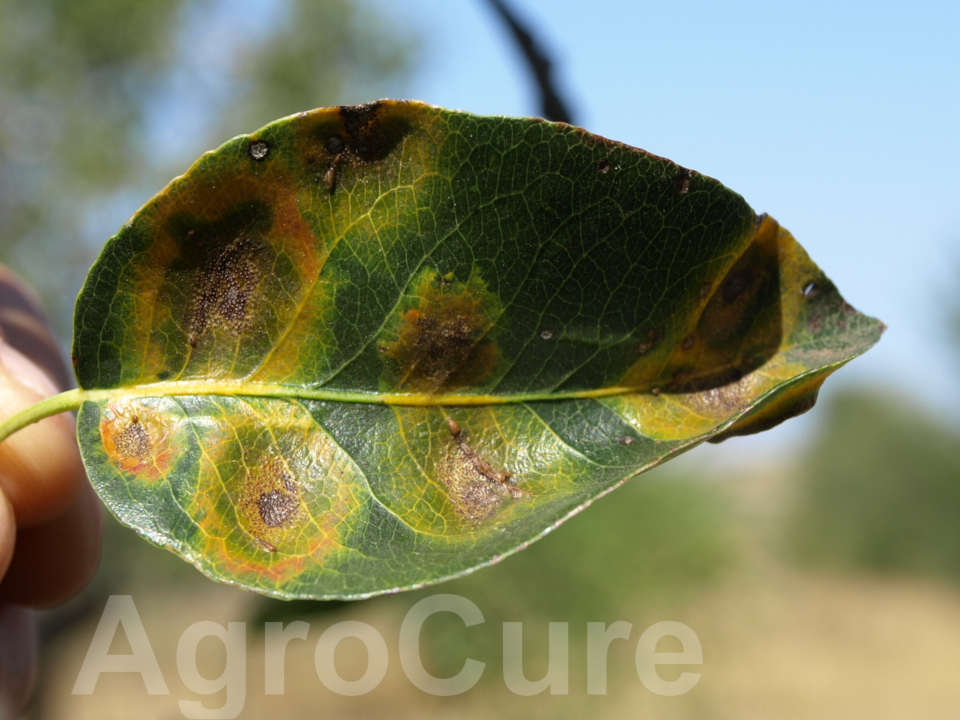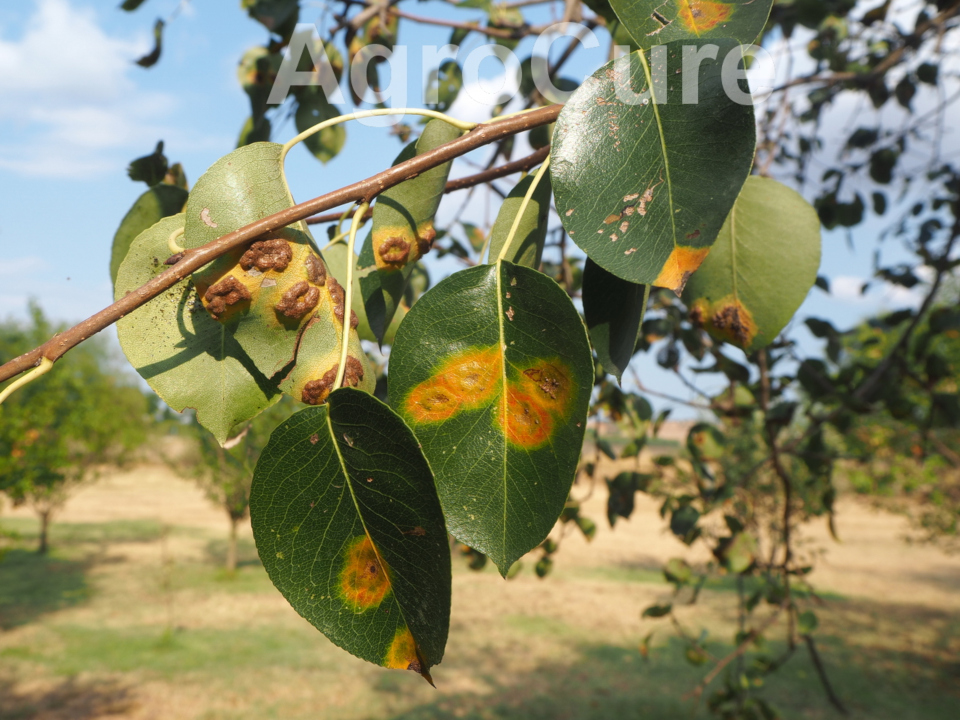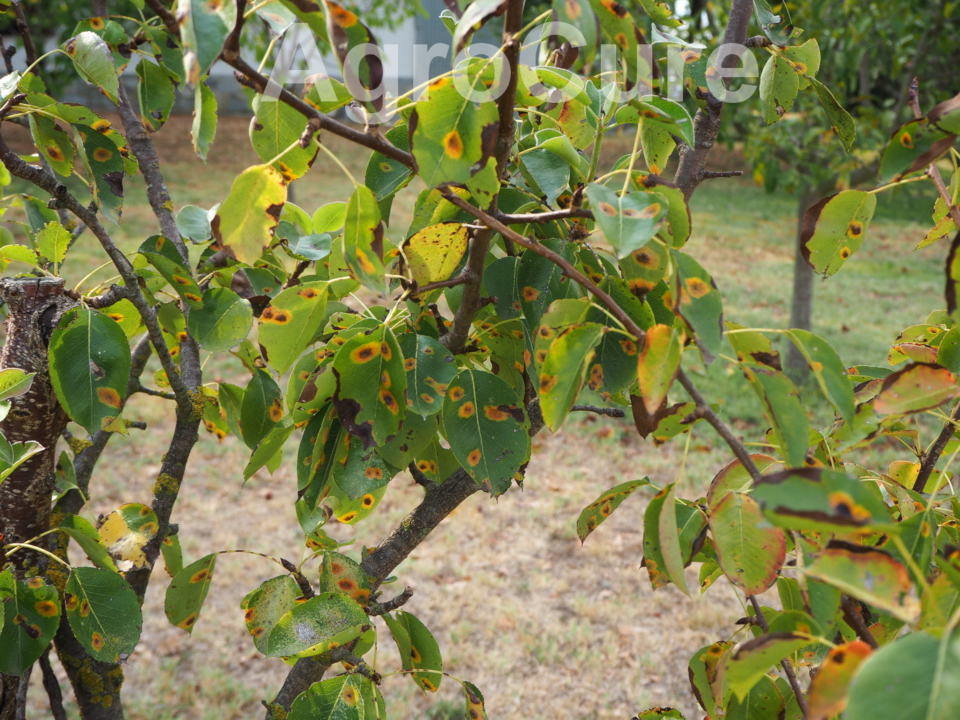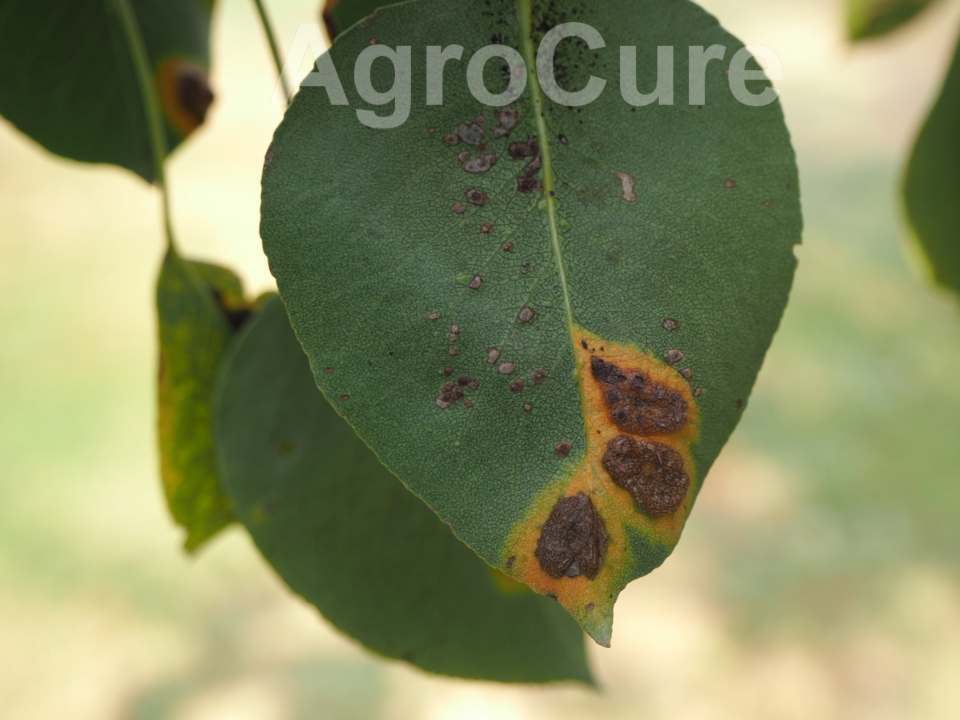Pear rust
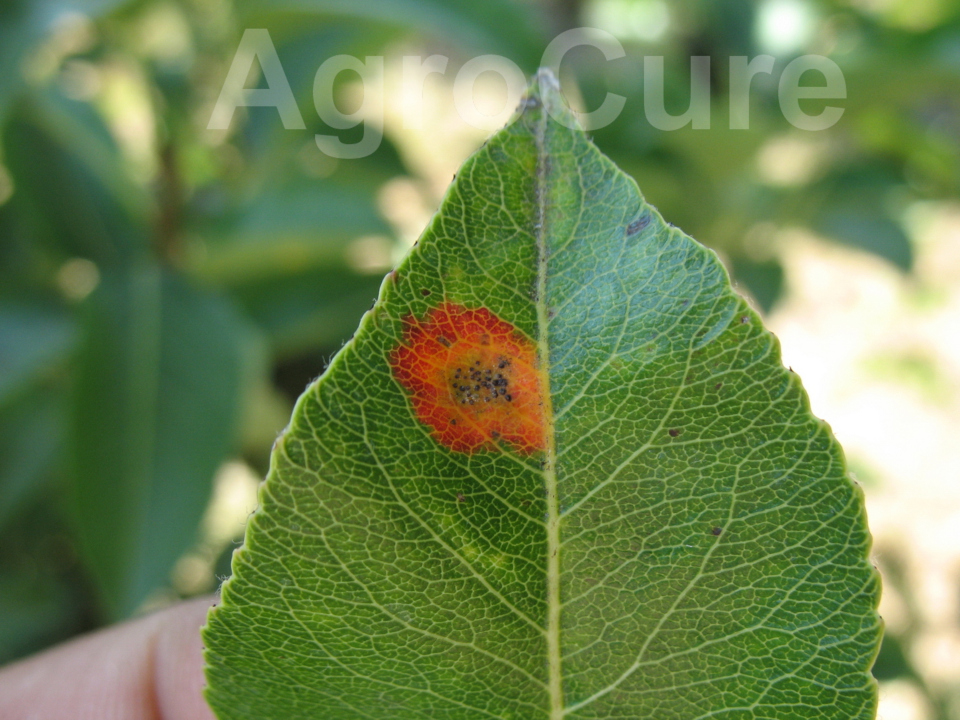
The disease is caused by the fungus Gymnosporangium sabinae (or G. fuscum) and is common in Europe and other regions around the world. The disease is easy to be recognized by the bright orange-reddish spots appearing on pear leaves during the summer.
The fungus has a complex biological cycle as it requires a metabolically active host continuously to survive. Alternative hosts apart from pear (Pyrus calleryana – decorative pear; Pyrus communis – common pear) can be decorative or forest trees of the genus Juniperus. The latter ones are conifers and evergreen and therefore can nourish the fungus during the winter.
In the autumn, fungal spores (aeciospores) that are produced in special formations on the bottom surface of pear leaves disperse and infect young Juniper stems. Early Summer the reverse phenomenon is observed: Basidiospores, produced in special formations on Juniper stems infect neighboring pear trees.
Symptoms
Symptoms on pear trees appear in the spring as yellow-orange spots of 1-2mm in diameter on the upper leaf surface while young stems and fruit can also be infected. Leaf spots extend gradually and get a bright orange – reddish color. Small black dots (pycnidia) appear in the center of the spots by mid-summer. Towards the end of summer, brown bumps are formed on the lower leaf side just below the upper spots and conical protrusions develop (aecidia) in which aeciospores are produced. The aeciospores are released, dispersed by the wind and eventually infect young stems of Juniper trees.
Importance and control
Usually overall damage from the fungus is not so severe as to threaten the tree health. Of course, pear production can be significantly affected especially when infection of leaves and young fruits is extensive which can cause defoliation, reduction of photosynsyntic capacity, weakening of trees and yield reduction.
Usually there is no need for special control measures. Sprays with protective or systemic fungicides (dithiocarbamates, triazoles and/or strobilurins) that are made for pear scab also keep pear rust at tolerable levels.
Author/photos: Aris Chloridis
